#adolphe bridge
Explore tagged Tumblr posts
Text
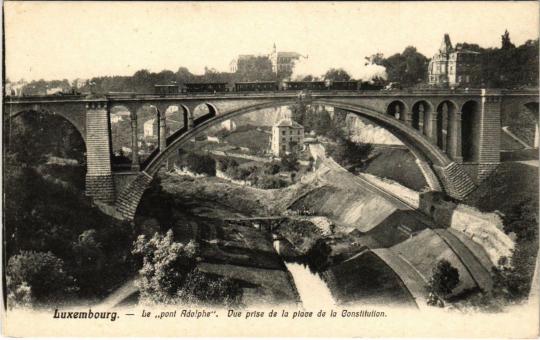
Adolphe bridge in Luxembourg
Luxembourgish vintage postcard
#historic#photography#postal#ansichtskarte#photo#sepia#vintage#postcard#briefkaart#adolphe bridge#luxembourgish#postkarte#tarjeta#carte postale#ephemera#adolphe#postkaart#bridge#luxembourg
3 notes
·
View notes
Text
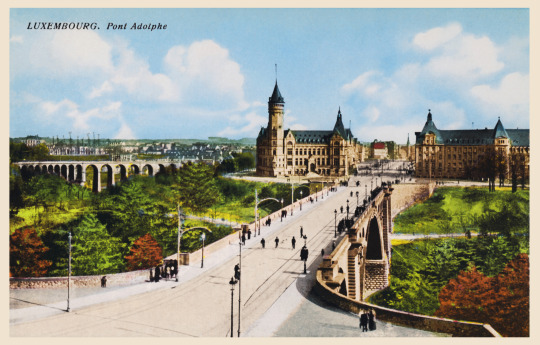
Luxembourg. Pont Adolphe.
1 note
·
View note
Text
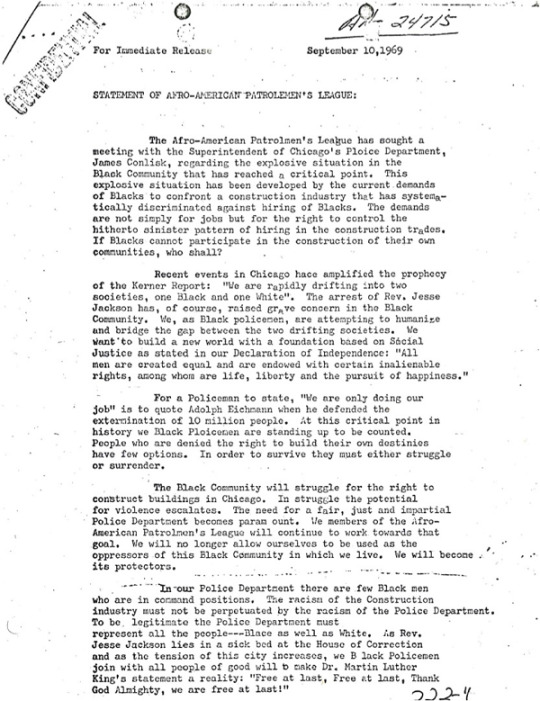
Statement of Afro-American Patrolmen's League
Record Group 21: Records of District Courts of the United StatesSeries: Civil Case FilesFile Unit: Renault Robinson and the Afro American Patrolmen's League v. James B. Conlisk, et al.
Confidential
[illegible] -24715
For Immediate Release
September 10, 1969
The Afro-American Patrolmen's League has sought a meeting with the Superintendent of Chicago's Ploice Department, James Conlisk, regarding the explosive situation in the Black Community that has reached a critical point. This explosive situation has been developed by the current demands of Blacks to confront a construction industry that has systematically discriminated against hiring of Blacks. The demands are not simply for jobs but for the right to control the hitherto sinister pattern of hiring in the construction trades. If Blacks cannot participate in the construction of their own communities, who shall?
Recent events in Chicago hace amplified the prophecy of the Kerner Report: "We are rapidly drifting into two societies, one Black and one White". The arrest of Rev. Jesse Jackson has, of course, raised grave concern in the Black Community. We, as Black policemen, are attempting to humanize and bridge the gap between the two drifting societies. We want to build a new world with a foundation based on Social Justice as stated in our Declaration of Independence: "All men are created equal and are endowed with certain inalienable rights, among whom are life, liberty and the pursuit of happiness."
For a Policeman to state, "We are only doing our job" is to quite Adolph Eichmann when he defended the extermination of 10 million people. At this critical point in history we Black Policemen are standing up to be counted. People who are denied the right to build their own destinies have few options. In order to survive they must either struggle or surrender.
The Black Community will struggle for the right to construct buildings in Chicago. In struggle the potential for violence escalates. The need for a fair, just and impartial Police Department becomes paramount. We members of the Afro-American Patrolmen's League will continue to work towards that goal. We will no longer allow ourselves to be used as the oppressors of this Black Community in which we live. We will become its protectors.
In our Police Department there are few Black men who are in command positions. The racism of the Construction industry must not be perpetuated by the racism of the Police Department. To be legitimate the Police Department must represent all the people--Blace as well as White. As Rev. Jesse Jackson lies in a sick bed at the House of Correction and as the tension of this city increases, we Black Policemen join with all people of good will to make Dr. Marin Luther King's statement a reality: "Free at last, Free at least, Thank God Almighty, we are free at last!"
60 notes
·
View notes
Text
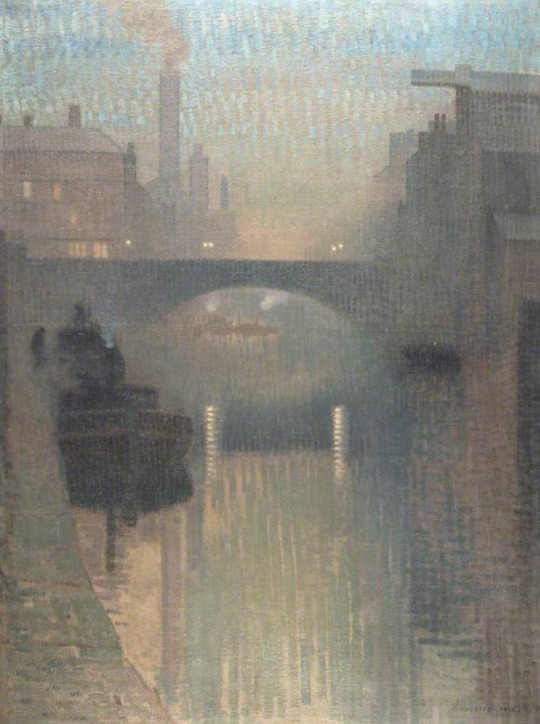
Pierre Adolphe Valette, Bailey Bridge, Manchester, 1912.
19 notes
·
View notes
Text
Adolphe Monticelli, known for his vibrant and expressive brushwork, was one of the most influential artists preceding the Impressionists. His paintings captivate viewers with their bold use of color and dynamic compositions. Some of his most famous works include "Woman with a Fan" and "Vase of Flowers." Monticelli's unique style, characterized by thick layers of paint and loose, energetic brushstrokes, greatly inspired prominent Impressionist painters like Vincent van Gogh and Paul Cézanne. Through his art, Monticelli bridged the gap between traditional painting techniques and the revolutionary approach embraced by the Impressionist movement, leaving behind a rich legacy that continues to enchant art enthusiasts worldwide.
2 notes
·
View notes
Text

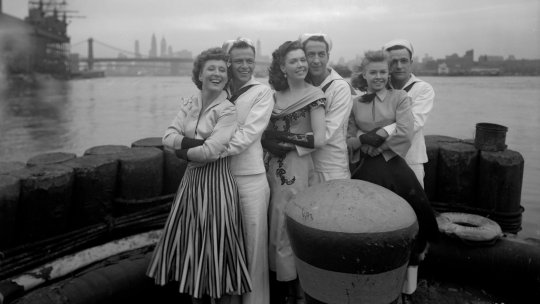

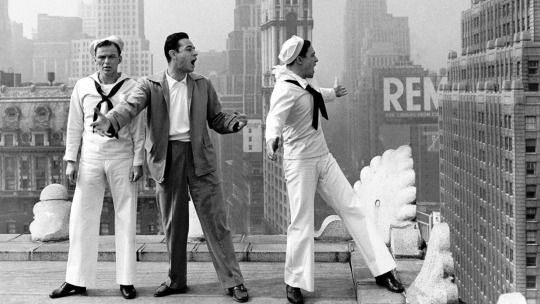
Celebrating the 75th anniversary of On the Town.
On the Town is a 1949 American film musical with music by Leonard Bernstein and Roger Edens and book and lyrics by Betty Comden and Adolph Green. It is an adaptation of the Broadway stage musical of the same name produced in 1944 (which itself is an adaptation of the Jerome Robbins ballet, titled Fancy Free, also produced in 1944.)
The film was directed by Gene Kelly (who also choreographed) and Stanley Donen, in their directorial debut, and stars Kelly, Frank Sinatra, Betty Garrett, and Ann Miller, featuring Jules Munshin and Vera-Ellen. It was a product of the Arthur Freed unit at Metro-Goldwyn-Mayer and is notable for its combination of studio and location filming, the result of Gene Kelly's insistence that some scenes be shot in New York City, including Columbus Circle, the Brooklyn Bridge, and Rockefeller Center.
The film was an immediate success and won the Oscar for Best Music – Scoring of a Musical Picture. It was also nominated for a Golden Globe Award for Best Cinematography (Color). Screenwriters Comden and Green won the Writers Guild of America Award for Best Written American Musical.
In 2006, the film ranked number 19 on the American Film Institute's list of Best Musicals. In 2018, the film was selected for preservation in the United States National Film Registry by the Library of Congress as being "culturally, historically, or aesthetically significant".
#on the town#leonard bernstein#roger edens#betty comden#adolph green#gene kelly#frank sinatra#jules munshin#betty garrett#ann miller#vera ellen#movie musical
6 notes
·
View notes
Text
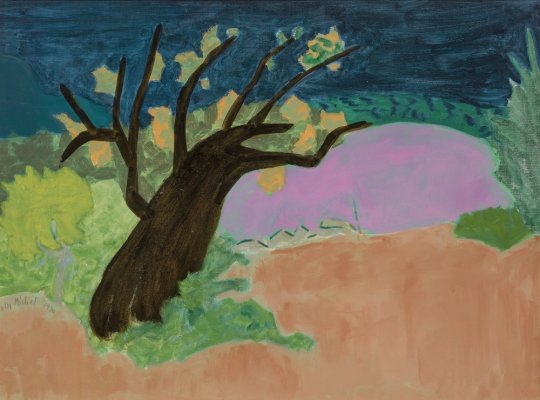
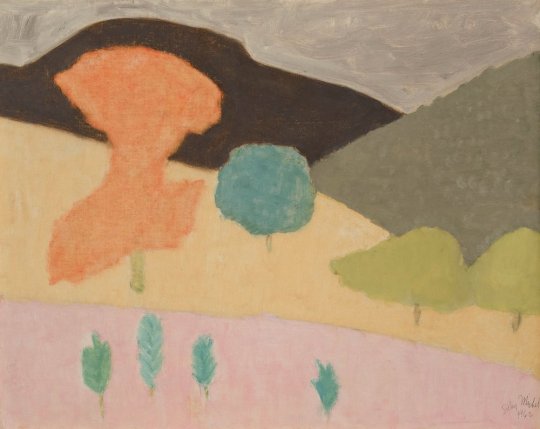
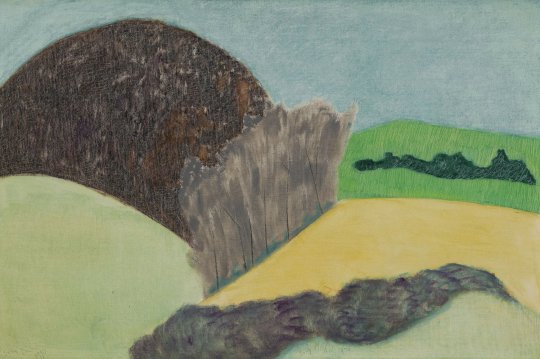
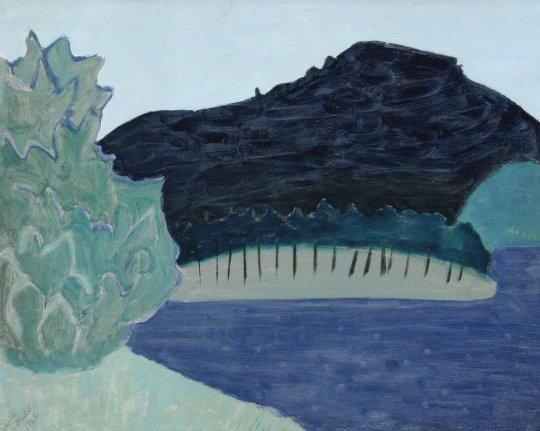

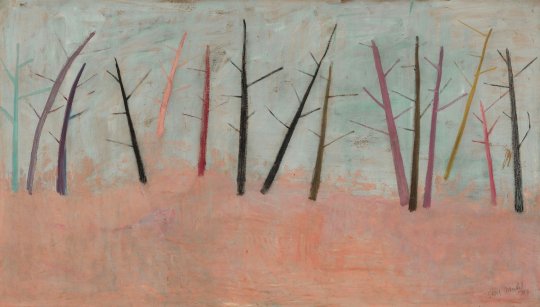

Sally Michel’s story cannot be told without bringing in her life partner, Milton Avery.
Milton Avery (1885-1965) and Sally Michel (1902-2003) met painting in Gloucester, Massachusetts in 1924. They admired each other’s dedication to sketching all day. Married in 1926, Sally and Milton worked in New York as a unit until Milton’s death in 1965. To provide support, Sally worked as a freelance illustrator, an occupation she could pursue at home. This allowed her to remain by the side of Milton and their young daughter, while continuing to develop her own painting. The couple would rise at six in the morning and draw or paint straight through to dinner. Sally was gregarious and Milton was taciturn, so she became his spokesman. Every Saturday they went to New York’s galleries and museums. They continued to sketch from a model at the Art Students League and later with a group of their artist-friends, at each other’s studios. Through the 1930s, fellow artists of Sally’s generation, including Mark Rothko, Adolph Gottlieb, and Barnett Newman frequently came to the Avery home to discuss art. By the mid-1940s Milton and Sally had each developed their own parallel but unique approaches to painting.
The refinement of their artistic visions evolved over many years of sketching, painting, looking, and sharing ideas on art. The Averys structured their year so that summers could be shared creating together and later with their artist-daughter March (b. 1932). Because rental apartments in New York were plentiful, Milton and Sally were able to leave the City each summer and return in the fall. They sketched non-stop on their trips, gathering source material for future paintings to be executed in the studio. A list of the summer trips gives some indication of which location inspired a painting’s subject. With limited funds in the 1930s, the Averys drove to summer locations in Connecticut (1930), Gloucester, Massachusetts (1926-1933), Vermont (1937, 1939, 1940), and the Gaspé Peninsula, Québec (1938).
Sally Michel did paint directly from nature throughout her career, but developed most of her artwork from sketches. She often created an intermediary watercolor or gouache that then informed the finished oil, transmitting a mood, time of day, weather, or season. The fluidity and luminosity of gouache and watercolor provided freedom to experiment with color and tone, which could be duplicated on canvas by painting with thinned pigments. To create an overall textural softness, Sally used a stiff brush to apply matte pigments in thin layers. If a pigment became too thick it could be scraped from the canvas to reveal lower coats of pigment and achieve the desired tone. In looking over a group of sketches to select one to paint, Sally considered contrasts between straight and curving lines, discrepancies in scale, and different views of a single scene. Sally’s portraits of individuals were often close-ups isolated against flat backgrounds. Scale distortion, exaggerated color, or caricature could provide social commentary when she desired it. This sketch-to-painting approach allowed Sally to achieve simplified and abstracted shapes locked together into finely balanced compositions.
Milton and Sally Michel Avery were artists dedicated to painting what they saw at a time of uncertainty for realism in American art. From 1946 to 1958 Abstract Expressionism, a gestural or action painting style with roots in European Surrealism, was at its height of popularity. Abstract Expressionists considered any reference to recognizable imagery to be parochial, out of date, and taboo. The Averys saw that bridges between realism and abstraction can go both ways and color, structure, and light are the common denominators. This realization led to recognizing that shapes, spaces, and color form a set of unique relationships independent of any subject matter. The Averys modernized realism by using the shapes of things, the spaces around them, and color in new ways. They treated color less naturalistically to reflect mood and transcend the factual aspects of realistic subjects.
Realism traditionally relies on light and dark contrasts to create depth. They found the use of non-naturalistic color suppressed that contrast and led to a new challenge of how else to produce depth. The solution they found was that a highly structured composition would still be read as a landscape, still life, or figure. To capture further universality and interconnections in their paintings, the Averys worked with shapes and their edges. They used thinly applied paint so the canvas ground was revealed around the edges of shapes, making the bare canvas function as color. The boundaries of soft shapes could be achieved through intricate color transitions, creating contiguous forms that blend into one another. This approach led to a new and important discovery that the distinctions between objects in a painting are fundamentally illusions and that the borders between shapes are what create representational art.
The Averys also found that reducing the number of shapes and colors in a painting and eliminating illusionistic rounded volumes and modeled forms added modernity to a scene. Shape and color could become equal when shapes were used as containers of color and that areas of color could be stacked as abstract signs of foreground, middle ground, distance, and sky. The Averys used patterns, organic or geometric, to express the forces as well as the forms of nature. Liquid or transparent areas of paint could embody the forces of wind and water. This demonstrated that painterly surfaces associated with the Abstract Expressionists could be used in realism to express more than angst.
In March of 1964 Milton’s health put him in a New York hospital where he died in January of 1965. Sally worked tirelessly to ensure Milton’s legacy while also continuing to paint and evolve the way she used materials for another twenty-five years. To achieve a dry paint surface with a soft matte feel, she mixed large amounts of turpentine with her paint rather than linseed oil. Always frugal with pigment, Sally used rags to moderate layers of color in a shape, and added luminosity by tinting colors with white pigment. Her experimentation with color harmonies was often daring. When she wanted textural interest or to bring attention to the two-dimensional surface of a canvas, she scratched into the paint. In the figures, animals, still lifes, and landscapes she painted, Sally worked to achieve mood and movement rather than detailed representation. She continued to find her imagery in the visible world, often inspired by her own travels abroad. To present it in a modern way took careful consideration and skill in her non-associative color choices for mood, selection and placement of realistic shapes, and attention to the edges of her reductive forms to achieve flattened compositions. In her art, Sally Michel understood and adapted elements from the two streams of representation and abstraction to refresh realism, keeping it relevant after Abstract Expressionism.
Essay by Deedee Wigmore
14 notes
·
View notes
Text

Flamingo Capri / Imperial Palace / The Quad / The Linq
Postcard: Imperial Palace, 1980.
Flamingo Capri ’59-’79
'59: Flamingo Capri motel opened 10/29/59. George Goldberg and Bill Capri, owners. The motel complex is built over the Flamingo Wash, with a curving, S-shaped wing crossing over a flood control channel, a north wing, and two V-shaped east wings. A bridge connects with Flamingo Capri parking lot and the Flamingo hotel parking lot.
'64: Goldberg plans Riverboat casino on the Flamingo wash, blocked by Flood Control Board.
'71: Flamingo Capri bought by Ralph Engelstad.
'72: Sign change circa Jan-May.
'74: Flamingo Capri’s north and east wings replaced by two L-shaped wings.
'77: First high rise, the Imperial Palace tower opened in Oct. In later years the placement of the tower complicates control of the Flamingo Wash flooding. “Clark County Regional Flood Control District could not install an underground drainage system without threat of weakening the footings of the hotel-casino.” (RJ 2/14/2010)
'78: S-wing is demolished, leaving the casino building at street level. Parking garage addition.
Imperial Palace ’79-2012
'79: Imperial Palace is the new name of the property as of 11/1/79; Flamingo Capri casino building is demolished 11/7/79. IP does not advertise under the new name until the beginning of the new year; there is no grand opening.
'80: Showroom and tower 2 addition.
'82: Tower 3 addition.
'87: Tower 4 addition. Flamingo Capri north wing demolished.
'88: Controversy over Engelstad’s holding private parties celebrating Adolph Hitler and collection of Nazi paraphernalia at the hotel. After investigation and hearings, Nevada Gaming Commission fines Engelstad $1.5M and places conditions on his gaming license on 2/25/89. The north Flamingo Capri wing from '74 demolished.
'89: Tower 5 and Pagoda tower addition (retail and office space at street level).
'02: Ralph Engelstad dies 11/26/02; IP remains privately owned by Engelstad Family Trust.
'05: IP bought by Harrah’s Entertainment. The corporate name is later changed to Caesars Entertainment.
The Quad, The Linq
2012: Remodeled. The east Flamingo Capri wing from '74 demolished. Renamed The Quad, 12/21/02.
2014: Renamed The Linq, 10/30/14.
Photos of Flamingo Capri | Photos of Imperial Palace
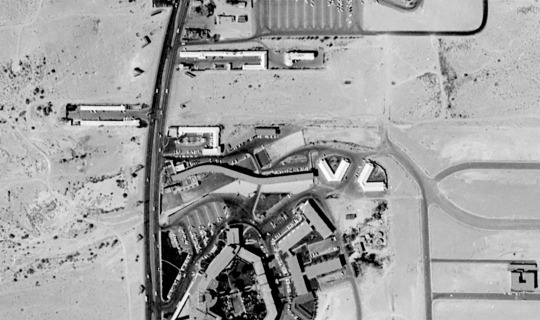
Flamingo Capri '60

Flamingo Capri '65

Flamingo Capri '77
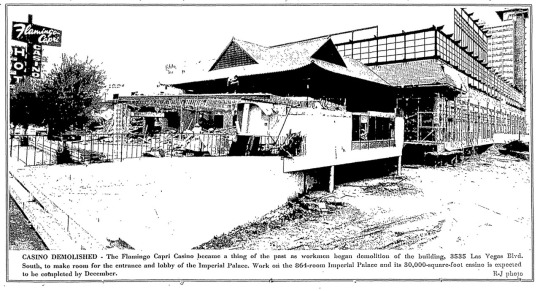
Flamingo Capri casino demolished, Nov. '79.
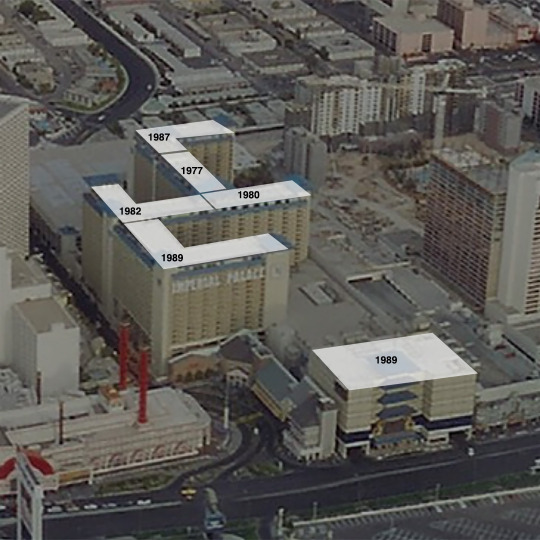
Sources include: Palm Springs Investor Financing Riverboat Casino in Las Vegas. Desert Sun, 8/13/64 p4; H. Stutz. Ralph Engelstad: A private life exposed. Review-Journal, 2/19/89; H. Stutz. Engelstad fined $1.5 million. Review-Journal, 2/25/89; J. Simpson. Owner to keep Imperial Palace. Review-Journal, 3/6/03; Adrienne Packer. Deluge Dangers. Review-Journal, 2/14/2010.
Timeline updated 11/26/2024
5 notes
·
View notes
Text
"Little Women" Posthumous Reunion: Final Resting Places of the People Behind the Novel and Its Adaptations
As a fan of the YouTube channel Hollywood Graveyard and the "Posthumous Reunion" pages on FindAGrave.com, I thought I would make a similar tribute to the people behind Little Women and its best-known screen adaptations. This is a guide to the burial sites (if they exist) of all the adaptations' leading actors and creative team members who have died, as well as those of the Alcott family and their friends, for anyone who hopes to visit them someday.
@littlewomenpodcast, @joandfriedrich, @thatscarletflycatcher
Arlington National Cemetery – Arlington, Virginia, USA
John Davis Lodge (John Brooke, 1933 film)
Cementerio de Benalmádena – Benalmádena, Spain
Paul Lukas (Friedrich Bhaer, 1933 film)
Ceder Hill Cemetery – Hartford, Connecticut, USA
Katharine Hepburn (Jo, 1933 film)
Cimitero Flaminio – Rome, Italy
Rossano Brazzi (Friedrich Bhaer, 1949 film)
Cimitiére Communal de Montrouge – Montrouge, France
May Alcott Nieriker (real-life Amy) (site unknown)
Forest Lawn Memorial Park, Glendale – Glendale, California, USA
Edna May Oliver (Aunt March, 1933 film)
June Allyson (Jo, 1949 film)
Elizabeth Taylor (Amy, 1949 film)
Robert Young (Mr. Laurence, 1978 miniseries)
George Cukor (director, 1933 film)
Mervyn LeRoy (director/producer, 1949 film)
Max Steiner (music, 1933 and 1949 films)
Adolph Deutsch (music, 1949 film)
Forest Lawn Memorial Park, Hollywood Hills – Los Angeles, California, USA
Jean Parker (Beth, 1933 film)
Leon Ames (Mr. March, 1949 film)
Holy Cross Cemetery – Culver City, California, USA
Mary Astor (Marmee, 1949 film)
Inglewood Park Cemetery – Inglewood, California, USA
Samuel S. Hinds (Mr. March, 1933 film)
Kensico Cemetery – Valhalla, New York, USA
Henry Stephenson (Mr. Laurence, 1933 film)
Mortlake Crematorium – Richmond, Greater London, England
Pat Nye (Hannah, 1970 miniseries)
Mount Hope Cemetery – Hastings-on-Hudson, New York, USA
Lucile Watson (Aunt March, 1949 film)
Oak Hill Cemetery – Lawrence, Kansas, USA
Alf Whitman (real-life Laurie)
Pleasant View Cemetery – Lyme, Connecticut, USA
Joan Bennett (Amy, 1933 film)
Savannah Cemetery – Savannah, Tennessee, USA
Elizabeth Patterson (Hannah, 1949 film)
Shiloh Cemetery – Shiloh, Illinois, USA
Mary Wickes (Aunt March, 1994 film)
Sleepy Hollow Cemetery – Concord, Massachusetts, USA
Louisa May Alcott (author and real-life Jo)
Abigail May Alcott (real-life Marmee)
Amos Bronson Alcott (real-life Mr. March)
Anna Alcott Pratt (real-life Meg)
John Bridge Pratt (real-life John Brooke)
Elizabeth Sewall Alcott (real-life Beth)
Henry David Thoreau (possible real-life Friedrich Bhaer)
Sparkman Hillcrest Memorial Park – Dallas, Texas, USA
Greer Garson (Aunt March, 1978 miniseries)
St. Leonard’s Churchyard – Hove, East Sussex, England
C. Aubrey Smith (Mr. Laurence, 1949 film)
Valhalla Memorial Park – North Hollywood, California, USA
Mabel Colcord (Hannah, 1933 film)
Westwood Village Memorial Park – Los Angeles, California, USA
Janet Leigh (Meg, 1949 film)
Cremated, Ashes Held Privately or Scattered
Frances Dee (Meg, 1933 film)
Douglass Montgomery (Laurie, 1933 film)
Peter Lawford (Laurie, 1949 film)
Patrick Troughton (Mr. March, 1970 miniseries)
Jean Anderson (Aunt March, 1970 miniseries)
Dorothy McGuire (Marmee, 1978 miniseries)
Richard Gilliland (Laurie, 1978 miniseries)
William Schallert (Mr. March, 1978 miniseries)
Virginia Gregg (Hannah, 1978 miniseries)
Angela Lansbury (Aunt March, 2017 miniseries)
Michael Gambon (Mr. Laurence, 2017 miniseries)
Sarah Y. Mason (screenwriter, 1933 and 1949 films)
Victor Heerman (screenwriter, 1933 and 1949 films)
Merian C. Cooper (producer, 1933 film)
Donated to Medical Science
Spring Byington (Marmee, 1933 film)
Unknown (Not Made Public or No Information Online)
Ladislas Wisniewski (real-life Laurie)
Richard Stapley (John Brooke, 1949 film)
Stephanie Bidmead (Marmee, 1970 miniseries)
Frederick Jaeger (Friedrich Bhaer, 1970 miniseries)
John Welsh (Mr. Laurence, 1970 miniseries)
John Neville (Mr. Laurence, 1994 film)
David Hempstead (screenwriter, 1933 film)
Elmer Bernstein (music, 1978 miniseries)
#little women#find a grave#actors#actresses#creative team#louisa may alcott#alcott family#graves#burial#cremation#tw: death
6 notes
·
View notes
Text

Adolphe bridge in Luxembourg
Luxembourgish vintage postcard, mailed to Paris
#vintage#tarjeta#luxembourgish#briefkaart#postcard#photography#postal#carte postale#adolphe bridge#sepia#ephemera#historic#paris#ansichtskarte#luxembourg#bridge#postkarte#adolphe#postkaart#mailed#photo
3 notes
·
View notes
Text
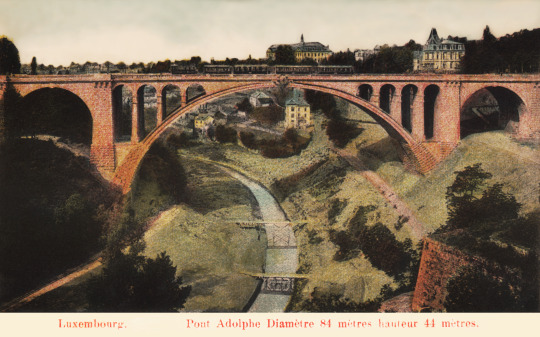
Luxembourg. Pont Adolphe - Diamètre 84 mètres - Hauteur 44 mètres.
1906
#luxembourg#luxembourg city#pont adolphe#adolphe bridge#1900s#1906#vicinal train#light railway#charly
1 note
·
View note
Text
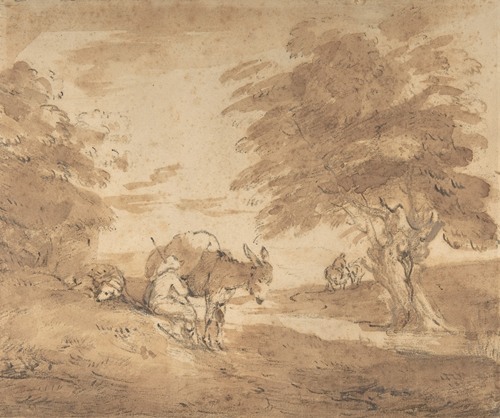
A Rest by the Way (Open Landscape with Figures, Donkey and Horses) (ca. 1780)
Thomas Gainsborough (English, 1727-1788) think about how quite it would be. no shopping malls no phones. just the sound of the wind through the trees. with our voices being the only thing to cut through the norm. we wouldnt feel like we had to dress or act a certain way cause we never even see another person for months. coming from here to there sure withdraw is to be seen but but ten twelve fifteenth years into it i can feel my blood pressure dropping as i write this.
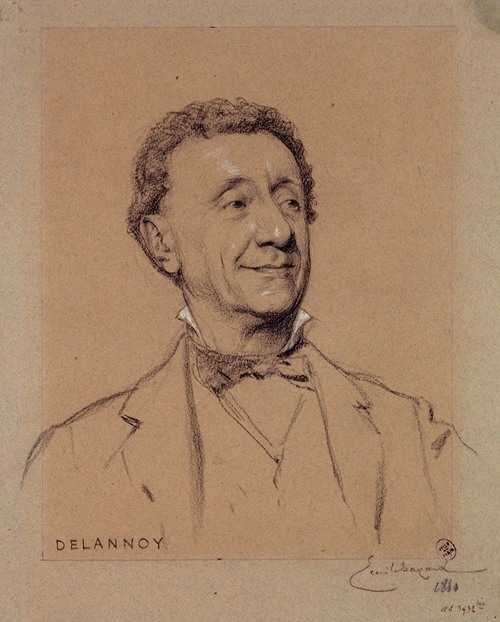
Portrait de Delannoy, acteur du Palais Royal. (1880)
Émile-Antoine Bayard (French, 1837-1891) when theres only 4 dudes in a city bet he was probably a lady killer lol.

Portrait Of A Russian Peasant (1871)
Ilya Efimovich Repin (Russian, 1844 – 1930) oh god he probably killed ladies...
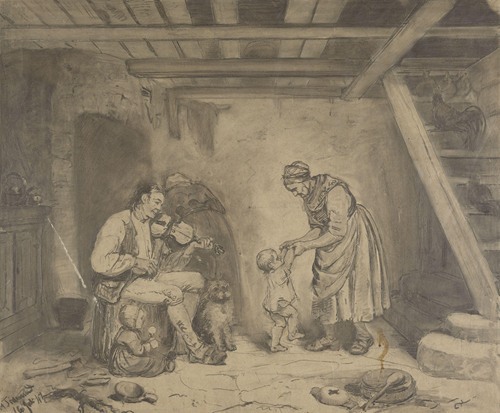
Kone danser med barn til felemusikk (1847)
Adolph Tidemand (Norwegian, 1814-1876)
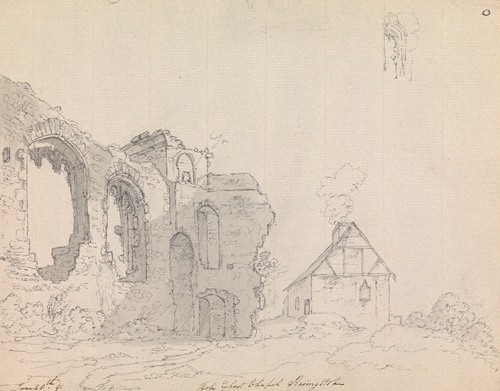
Chapel of the Holy Ghost, Basingstoke, England (1791)
James Moore (English, 1762���1799)

Snobisme ou Chez Larue (1897)
Henri de Toulouse-Lautrec (French, 1864-1901) i can almost smell it, strong cigs of some kind choking the air. welcoming almost as body odor and perfume made from somthing a little i do mean only alittle better then the smell of month old unwashed asses
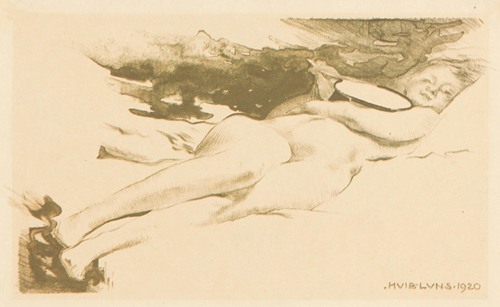
Liggende naakte vrouw met spiegel
Huib Luns (Dutch, 1881-1942)

Figures crossing a bridge over a ravine (1783)
Samuel Davis (English, 1757-1819)
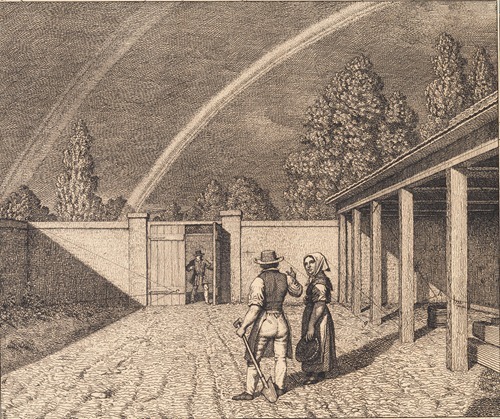
En dobbelt regnbue Illustration til Linearperspectiven , Tavle V
Christoffer Wilhelm Eckersberg (Danish, 1783 – 1853)
when you werent near a farm or a brothel or a boat coming into the docks i bet the air smelled so sweet youd want to put it on toast tho.
1 note
·
View note
Text
Place de la Constitution, Plaza(Luxembourg, Grand Duchy of Luxembourg) 憲法広場★★
I visited the Place de la Constitucion in Luxembourg (^o^)
A fine view of the Adolphe Bridge over the Petrusse ravine (^o^)v
ルクセンブルクにある憲法広場に行って来ました(^o^)
ペトリュス渓谷にかかるアドルフ橋が綺麗に見えます(^o^)v

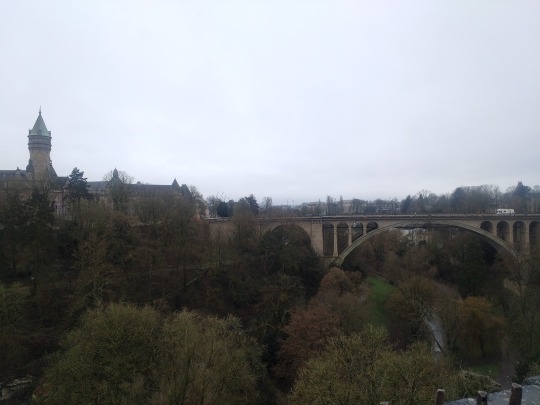




0 notes
Text
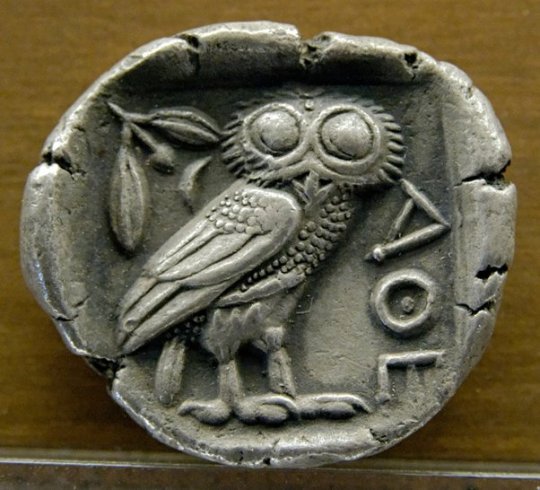
FOR MICKEY 😀
I ask Google what does it mean why mickey has 3 eyes 😀
If the question refers to the no-longer-extant historical group called the Illuminati - (which consisted of a thousand or so members, not six!) then I’d be very surprised if Mickey Mouse Clubhouse contained any clear references to it - with one exception I’ll get to later - as it was a group of upper and middle-class Germans intent on having an enlightened secret society where they opposed religious abuses and superstition. Perhaps I missed the bit where Goofy waxes lyrical about Adolph Knigge’s plans for the development of the higher degrees of the order.
If the question instead refers to the imagined (and almost certainly non-existent) group of that name, which the credulous believe secretly controls the world, then of course Mickey Mouse Clubhouse references that Illuminati.
Every TV show, song, movie or book ever created references that Illuminati, albeit virtually always unintentionally. This is because the aforementioned credulous folk have created such a vast list of things that are supposedly Illuminati references it would be nearly impossible to make a creative work without including a single one.
The various lists include things as commonplace and diverse as eyes, the sun, umbrellas, triangles, fire, pointing - in fact more or less any hand signal is taken to be an Illuminati symbol! - mirrors, rainbows, butterflies and owls.
Hey, you said there was a reference in Mickey Mouse Clubhouse!
Indeed. There was one thing that could be said to have been referenced the real Illuminati - though I’ve no doubt whatsoever it was unintentional - in Mickey Mouse Clubhouse: the Owl of Minerva / Athena.
Source: File:Tetradrachm Athens 480-420BC MBA Lyon.jpg
Series one, episode 17 of Mickey Mouse Clubhouse apparently - I’ve not watched it myself - features a character called Wise Owl.
And if after reading that anyone is thinking: “OMG, Illuminati confirmed”, then I have a bridge to sell you…
0 notes
Text
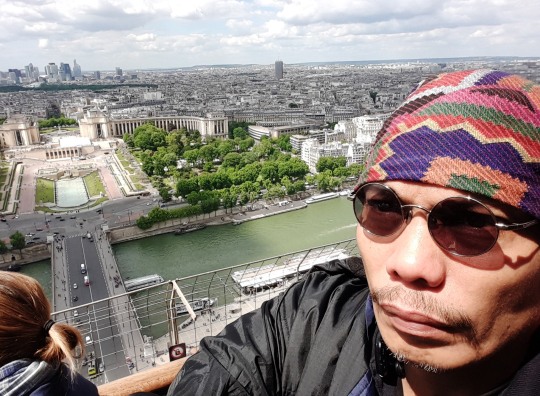
1878 Paris Exposition selfie
Standing atop the Eiffel Tower overlooking the old 1878 Palais du Trocadéro and 1814 Pont d'Iéna over the River Seine, in Paris, France. The green area is the 8 hectares of the Jardins du Trocadéro that was constructed in 1878 by French engineer Jean-Charles Adolphe Alphand (1817-1891) for the Exposition Universelle, which the Eiffel Tower was also built for. The palace and its area was named after the Trocadéro fort in Cadiz, Spain; in which the French forces claimed victory in a battle on 1823.
The neo-Byzantine styled Palais du Trocadéro was designed by Arch. Jean-Antoine-Gabriel Davioud (1824-1881) was also created for the 1878 Exposition Universelle as a theater and museum for the event. In front of it is the Palais du Trocadéro at the banks of the River Seine is the modern Palais de Chaillot that was built in 1937 for the Exposition Internationale of the same year. The Palais de Chaillot was designed by the architects Louis-Hippolyte Boileau (1878–1948), Léon Azéma (1888-1978), and Jacques Carlu (1890-1976). The Palais de Chaillot was decorated with sculptures by the artists Raymond Delamarre (1890-1986), Charles Marie Louis Joseph Sarrabezolles (1888-1971), Alfred-Alphonse Bottiau (6 February 1889 – 25 February 1951), Alexandre Descatoire (1874-1949), Marcel Antoine Gimond (1894-1961), Lucien Alcide Constant Brasseur (1878-1960), Robert Couturier (1905-2008), Paul Niclausse (1879-1958), Félix-Alexandre Desruelles (1865-1943), Jean Paris dit Pryas (1891-1985), and Paul Cornet (1892-1977). In 1948 and 1951 the Palais de Chaillot hosted the United Nations General Assembly, and from 1952 to 1959 it served as the headquarters of NATO (North Atlantic Treaty Organization).
The southern left building of the Palais de Chaillot contains the Musée national de la Marine (naval museum) and the Musée de l'Homme (prehistory and anthropology), whereas the right eastern wing is home to the Cité de l'Architecture et du Patrimoine (Architecture and Heritage City) and the Musée national des Monuments Français (National Museum of French Monuments). The lower edifice is the Théâtre national de Chaillot (Chaillot National Theatre), a theatre below the esplanade.
Crossing the River Seine is the 1814 Pont d'Iéna ("Jena Bridge"), which was named after the 1806 at the victorious “Battle of Jena” in Germany by Napoléon Bonaparte (1769-1821). The sides of the bridge are sculptures that were created by François-Frédéric Lemot (1772-1827); add additional statues were added with the 1852 imperial eagles by Antoine-Louis Barye (1795-1875), the 1853 Gaelic Warrior by Antoine-Augustin Préault (1809-1879) and Roman Warrior by Louis-Joseph Daumas (1801-1887) on the northwest bank, while the 1853 Arab Warrior by Jean-Jacques Feuchère (1807-1852) and Greek Warrior by François-Théodore Devaulx (1808-1987) on the southeastern bank.
This picture was taken circa 2015
#travel#history#arthistory#filipinotraveler#paris#france#jardinsdutrocadero#palaisedutrocadero#palaiseduchaillot#pontdlena#eiffeltower
0 notes
Text


"17 ACCUSED GIVEN VARYING TERMS," Toronto Star. July 4, 1934. Page 3 & 11. --- Three Members of Truck Robbing Gang Sent to Jail ---- Headed by three of the four members of the gang recently arrested for systematic robbing of parcels from trucks, 17 prisoners were given sentences totalling 25 years and one month by Judge Monet and Judge J. A. Dubeau, replacing Judge Tetreau, in the Criminal Court today.
Arthur Vincent, Adrien Langlois and George Paquin, the three members of the truck-robbing gang, received the heaviest sentences from Judge Monet when Vincent drew three terms of three years each to run concurrently and Langlois and Paquin each got three terms of two years each to run concurrently.
The three accused had been found guilty on three charges of stealing parcels from parked trucks and from trucks which slowed up to cross the bridge at Bout de l'Ile. It was proved in court that the accused boarded the trucks, threw off the parcels and then carted them away when the motor vehicles had driven out of sight. A fourth member of this gang, Emil Noel, who pleaded guilty to similar charges, was given nine months in jail with hard labor by Judge Tetreau last week.
TWO YEAR TERM. For the theft of $60 from Ernest Beauchemin, 156 Dorchester street east, of which he had been found guilty, Leonard Bisson, 25, formerly of Stanstead, Que., was sentenced by Judge Monet to two years in the penitentiary. Bisson had been sentenced in 1929 to six terms of six months each on six charges of passing false cheques.
ARMED HOLD-UP. Bruno Decosse, 28, no known address, fared better than his two companions with whom he was charged with the attempted armed hold-up of Adolphe Masson at the Masson Biscuit factory in St. Henry on June 18. Decosse, who, with his two companions, turned and ran away when they were duped by Adolphe Masson, the latter using a black ruler to pretend he was armed, was sentenced today to six months in jail with hard labor by Judge Monet.
One of his companions, William Bremner, no known address, who was the first arrested when struck by bullets from a traffic policeman's revolver as he tried to escape, received a term of three years in the penitentiary and George Dumais, 19, no address given, the third accused, was sentenced to two years in the penitentiary last week.
HOUSE BREAKING Charles Cunningham, no known address, and Albert Mooney, 29, 387 4th avenue, Verdun, will each spend the next six months in jail doing hard labor for breaking into the premises of E. C. Leslie & Co., 620 St. Paul street, and stealing merchandise.
BROKE INTO STORE Ralph Henderson, 19, formerly of Grande Riviere, Gaspe; Jimmy Kelly, 20, no known address, and Harry Desaulniers, 21, were each sentenced by Judge Monet to three months in jail with hard labor on the charge of breaking into the store at 325 McCord street and stealing provisions valued at $50.
STOLE WOOD Because he had several similar convictions already on his police record, Emile Gendron, 22, no given address, was sentenced by Judge Dubeau in the police court to two months in jail with hard labor for theft of wood, the property of the C.P.R.
George Therrien, 19, no given address, was given two sentences of one month each to run concurrently on similar charges.
BICYCLE THEFT Sentence of one month in jail was imposed by Judge Dubeau on Roland Lemaire, 17, 1658 St. Timothee street, on a charge of theft of a bicycle valued at $30. Paul Emile Lepine, 20. 1250 Montcalm street, co-accused with Lemire, received 15 days in jail as his punishment because it was only his first appearance in court.
Judge Dubeau sentenced Edouard Parent, 23, no given address, to one month in jail with hard labor, on a charge of false pretenses to which he had pleaded guilty and he sent Arthur Houle, of Verdun to jail for 15 days on a charge of indecency.
#montreal#police court#burglary gang#robbery#robbers#stolen parcels#stealing from cars#housebreaking#armed robbery#armed robbers#attempted armed robbery#bicycle theft#sentenced to the penitentiary#st vincent de paul penitentiary#sentenced to prison#montreal jail#great depression in canada#crime and punishment in canada#history of crime and punishment in canada
0 notes